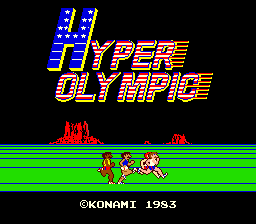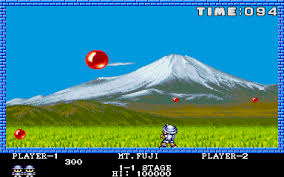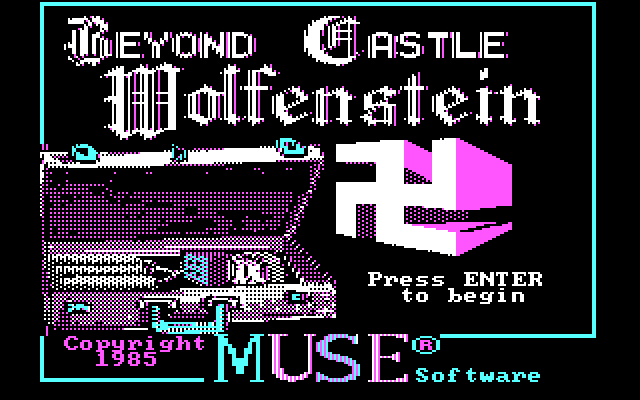Tetris ( Ⓒ 1988 Atari Games.
Face The Soviet Challenge!
- TECHNICAL -
Upright model
Game ID : 136066
Main CPU : M6502 (@ 1.789772 Mhz)
Sound Chips : (2x) POKEY (@ 1.789772 Mhz)
(Upright and Side-by-Side Cocktail models)
Screen orientation : Horizontal
Video resolution : 336 x 240 pixels
(Head-to-Head Cocktail model)
Screen orientation : Vertical
Video resolution : 240 x 336 pixels
Players : 2
Control : 8-way joystick
Buttons : 1
- TRIVIA -
Tetris is a CLASSIC; ranking with the likes of "Pac-Man", "Donkey Kong" and "Tempest"; and is still one of the most popular games today.
Inspired by a pentominoes game he had bought earlier, Alexey Pajitnov creates Tetris on an Electronica 60 in June 1985 at the Moscow Academy of Science's Computer Center. It is ported to the IBM PC by Vadim Gerasimov and starts spreading around Moscow. Pajitnov gets a small degree of fame for his program. Due to Soviet political structure at the time, the inventor, Alexey Pajitnov was not able to patent his game. This gave rise to many sundry Tetris clones for all manner of machines.
Here is the name of all tetrominos in Tetris (A tetromino is a geometric shape composed of four squares, connected orthogonally) :
• The 'I' (Also called 'Stick' or 'Straight') - Four blocks in a straight line.
• The 'Square' (Also called 'O', 'Package' or 'Block') - Four blocks in a 2x2 square.
• The 'T' - A row of three blocks with one added below the center.
• The 'L' - A row of three blocks with one added below the left side.
• The 'J' (Also called 'Inverted L' or 'Gamma') - A row of three blocks with one added below the right side (This piece is a reflection of 'L' but cannot be rotated into 'L').
• The 'S' - Bent trimino with block placed on outside of clockwise side.
• The 'Z' (Also called 'Inverted S') - Bent trimino with block added on outside of anticlockwise side (This piece is a reflection of 'S' but cannot be rotated into 'S').
Apart from being a fine game, Tetris is also a perfect mirror of the human condition. For a while the game is entertaining, and we seem to have mastered it and are having fun. Then, something goes wrong. A rash mistake, or an unfulfilled wish, and we're fighting to repair the damage, but we've been thrown off-balance, and the cancer is spreading. Blocks that were once orderly and harmonious are jumbled and filled with holes, and our cup is on the verge of running over. There's always a point at which we stop planning for the future, and realize that we don't have one - all we can do is cling to the present and concentrate, focus our minds on what it's like to be alive, to play the game, before it's all over. You were waiting for a four-by-one block that never came. Eventually we stare death in the face, and death will not spare us because we would warn the others to stay away and not play the game. Sometimes we resist to the bitter end, moving blocks left and right without thought or care, just to hang on, and sometimes we accept the inevitable and pull the blocks down to us, smiling inwardly at the great joke. The rest is silence. We admire the fox as it escapes from the hounds, but when the hunt is over we turn away, and go off and drink and be merry, and somewhere else someone or something is watching us as we watch the fox. But the fox knows it is being chased.
Tetris falls in the same class of tantalizing problems as the famous Traveling Salesman Problem or the Halting Problem. It's the intellectual challenge of coming up with heuristics to crack the game that make it so addictive.
A bootleg version was released by 'Video Games' in 1989 (See 'Updates' for more information).
- UPDATES -
The bootleg version (made by 'Video Games') shares a different 'Staff screen' (See Staff section for the original), here is the bootleg one :
Project leader : James Bond
Video Graphics : Tom Catson
Engineer : Ted Tedious
Technician : Log Dreaming
Audio : Bill Cody
- SCORING -
Placing a piece : 0 to 500 points
Filling lines across :
Single : 50 points
Double : 150 points
Triple : 400 points
Quadruple 'tetris' : 900 points
Starting on round 4 : 20,000 points
Starting on round 7 : 40,000 points
The end of round bonus depends on how many incomplete lines the player has at the bottom of the well when the round ends :
0 lines : 2,100 points
2 lines : 1,710 points
3 lines : 1,530 points
4 lines : 1,360 points
5 lines : 1,200 points
6 lines : 1,050 points
7 lines : 910 points
8 lines : 780 points
9 lines : 660 points
10 lines : 550 points
11 lines : 450 points
12 lines : 360 points
13 lines : 280 points
14 lines : 210 points
15 lines : 150 points
16 lines : 100 points
17 lines : 60 points
18 lines : 30 points
19 lines : 10 points
- TIPS AND TRICKS -
While on attract mode, if you pull player 1 joystick to the left and player 2 joystick to the right simultaneously the demo steps into its next phase. If you repeat it a few times the music will start playing...
If you tap the 'rotate' buttons when the guy in the doorway is doing his 'victory dance' a hook will reach out from the side and drag him away by the neck. If you do it when he is just dropping down to do the 'Cossack Kicks', he'll dodge the hook the first time, but get caught by it on the return.
- STAFF -
Project leader : Kelly Turner
Programmed by : Norm Avellar, Kelly Turner, Ed Logg
Video graphics by : Kris Moser
Engineer : Doug Snyder
Technician : Glenn Mcnamara
Audio by : Brad Fuller
- PORTS -
• Consoles :
Nintendo NES ("Tengen Tetris"). This port was not licensed by Nintendo and was only released in North America.
- SOURCES -
Game's rom.
Machine's picture.
|
(1988)-20230913-024257-0129a222fe10c9896db191c537694699.png)
(1988)-20230913-024303-3a02debc33c876c00119b9eb7fd38b5a.png)
(1988)-20230913-024310-cd21219f598ecc9c06b485915361448b.png)
(1988)-20230913-024133-f5d5892764397d98feffa1d1ff55fd95.png)
(1988)-20230913-024150-5fa7adf98eeba6106999103adb716f68.png)
(1988)-20230913-024203-8ca2f2faaace55a5cdb54d3b3b8a520e.png)
(1988)-20230913-024216-0a16224c296f72af9037875a027f94a6.png)
(1988)-20230913-024222-bbc226da5038f2ce2936a649806fe370.png)
(1988)-20230913-024241-be71b27fdddb8a0fded30cb6f268bb02.png)
(1988)-20230913-024246-9e1d543470b52e6e0f51881b091d9a18.png)
(1988)-20230913-024252-9819b74839b43d1bb40d08abc9d24fb3.png)

(1984)-20230913-123336-68c7fca1e3bba5e49ec90847dcdd456b.png)
-20230912-142417-0a8b2799af5e9b658b8fdb0558fc99c8.png)
-20230915-132956-f6ada47e77d9937a5af80b8f4c3826cf.png)





